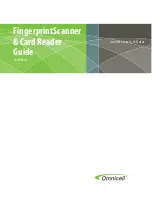
Device description
Leuze electronic GmbH + Co. KG
BCL 308
i
24
• Integrated code reconstruction technology (CRT) enables the identification of soiled or damaged bar
codes
• Maximum depth of field and reading distances from 30 mm to 700 mm
• Large optical opening angle and, thus, large reading field width
• High scanning rate with 1000 scans/s for fast reading tasks
• On request with display to easily detect and activate functions and status messages.
• Integrated USB service interface, Mini-B type
• Adjustment of all device parameters with a web browser
• Easy alignment and diagnostics functions
• Up to four possible connection technologies
• Two freely programmable switching inputs/outputs for the activation or signaling of states
• Automatic monitoring of the read quality with autoControl
• Automatic recognition and setting of the bar code type using autoConfig
• Reference code comparison
• Optional heating models to -35 °C
• Heavy-duty housing of degree of protection IP 65
General information
The integrated fieldbus connectivity =
i
contained in the bar code readers of the BCL 300
i
series facilitates
the use of identification systems which function without connection unit or gateways. The integrated
fieldbus interface considerably simplifies handling. The Plug-and-Play concept enables easy networking
and very simple commissioning: Directly connect the respective fieldbus and all configuration is performed
with no additional software.
For decoding bar codes, the bar code readers of the BCL 300
i
series make available the proven CRT
decoder with code reconstruction technology:
The proven code reconstruction technology (CRT) enables bar code readers of the BCL 300
i
series to
read bar codes with a small bar height, as well as bar codes with a damaged or soiled print image.
With the aid of the CRT decoder, bar codes can also be read without problem in other demanding situa
-
tions, such as with a large tilt angle (azimuth angle or even twist angle).
Figure 4.2: Possible bar code orientation
The BCL 308
i
can be operated and configured using the integrated webConfig tool via the USB service
interface; alternatively, the bar code readers can be adjusted using configuration commands via the host/
service interface.
The BCL 308
i
needs a suitable activation to start a read process as soon as an object is in the reading
field. This opens a time window ("reading gate") in the BCL 308
i
for the read process during which the bar
code reader has time to detect and decode a bar code.
In the basic setting, triggering takes place through an external reading cycle signal. Alternative activation
options include online commands via the host interface and the autoReflAct function.
NOTE
For information on technical data and characteristics, refer to Chapter 5.
















































